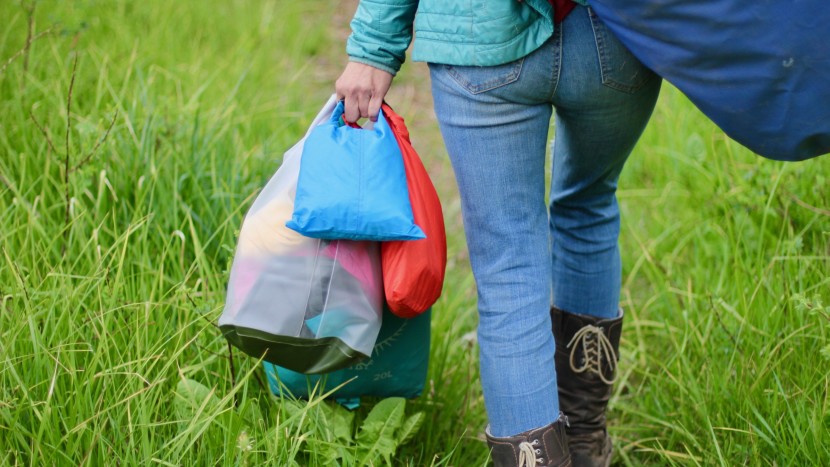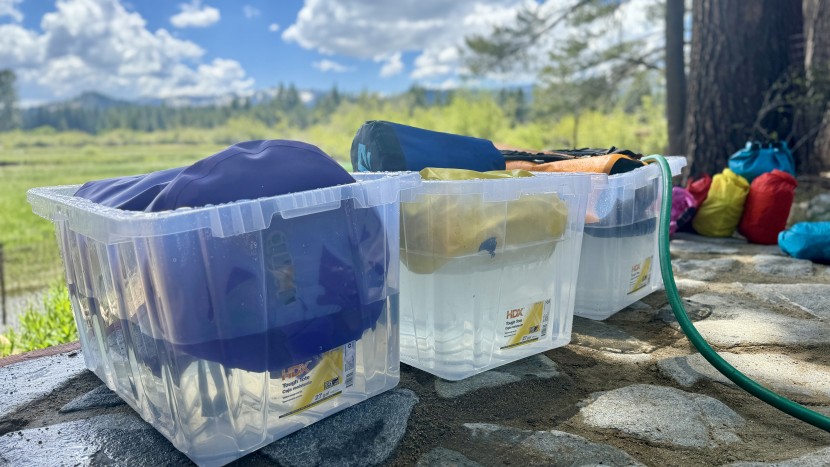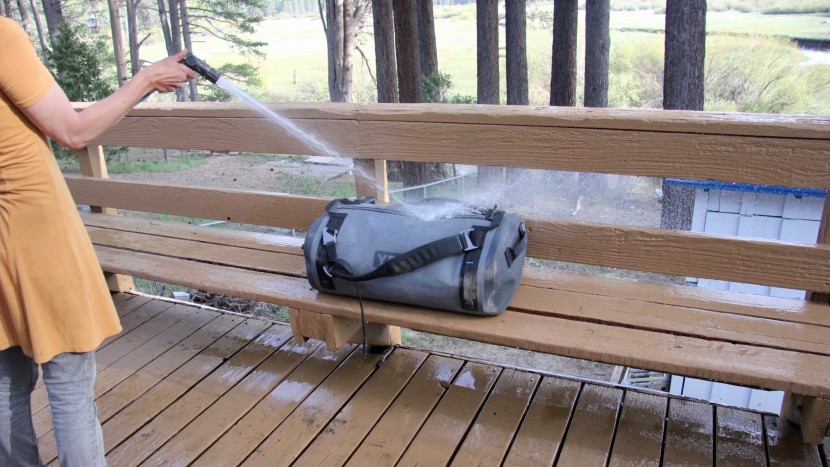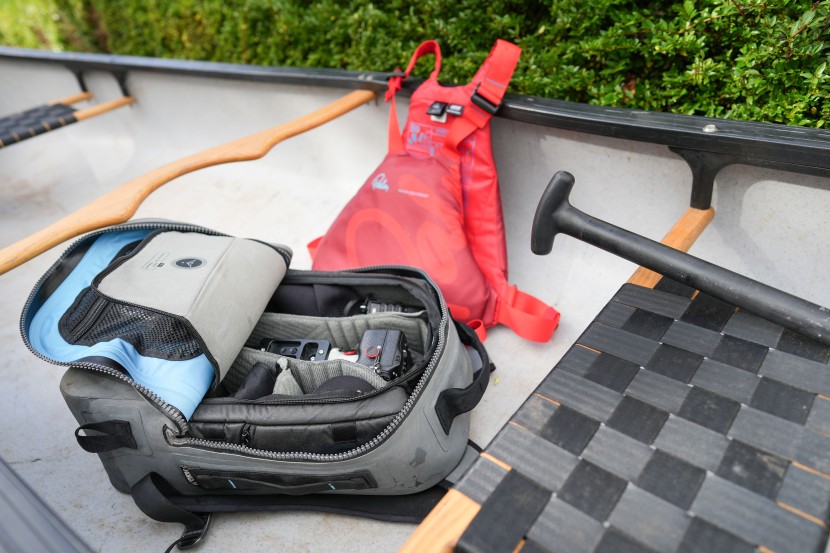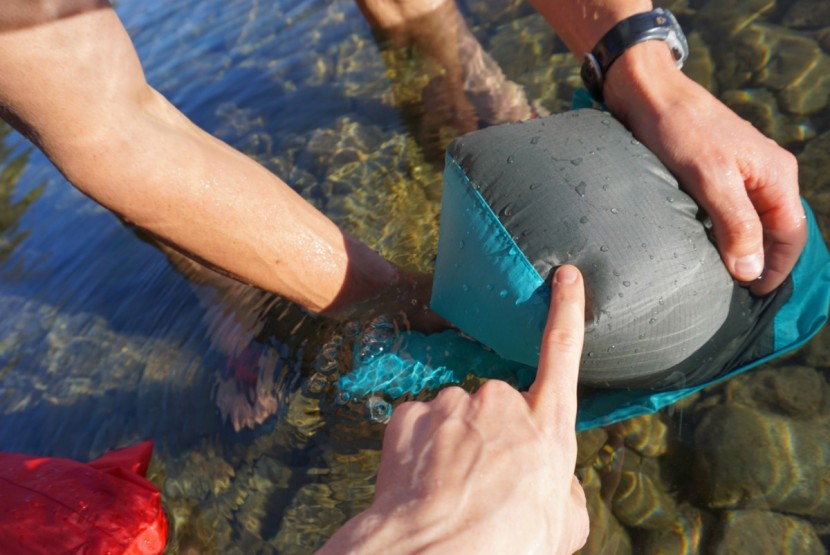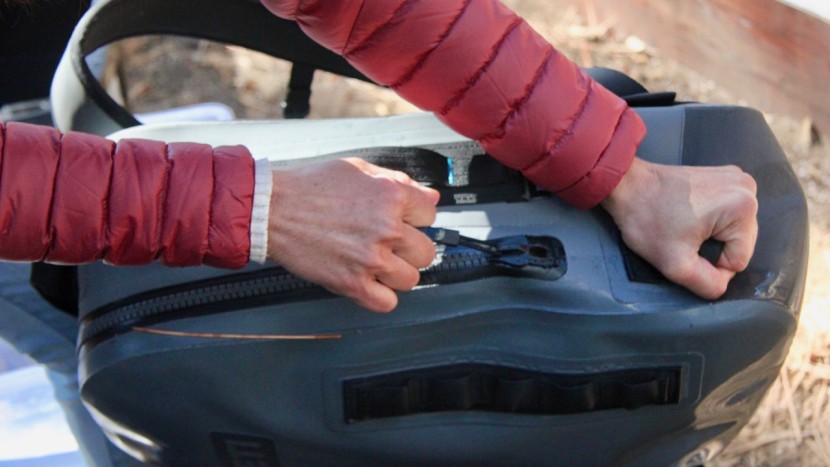Here at GearLab, we pride ourselves on pushing our gear to the limits. From standard use cases to fringe one-offs, we try it all with enthusiasm and thoroughness. Following is a walk-through of how we tested each of our key metrics for dry bags.
Waterproofness
The ability to keep water out and your gear dry is the most important job of a dry bag, so this metric was weighted the most heavily. To test each product's capacity in this metric, we first exposed them to regular recreational use. We used them for paddle boarding, beach days, backpacking, and river trips and took careful notes about the level of water exposure they received and how the internal contents fared.
We then subjected them to more rigorous testing. We sprayed them with a hose, focusing pressure on zippers, seals, seams, and valves. Next, each product was filled with clothes and absorbent kitchen towels were placed along any seam lines and near the opening. The bags were closed according to the instructions and left in water for 24 hours. The inside of the bag was then evaluated for water, with the kitchen towels helping to highlight even slight dampness.
Ease of Use
We set out to determine how each product packs, carries, secures to different crafts, and how simple it is to retrieve contents during an activity. We timed ourselves packing a standardized test load into each bag and securing them closed.
We evaluated closure methods, carry contraptions, and lash points for their usability and convenience. We accessed contents in kayaks and backpacks and on beaches. When all was said and done, we'd used each model for a wide variety of adventures and packed everything from clothes to cameras to sleeping gear inside.
Quality of Construction
To best assess construction, we spent months subjecting these products to regular use and abuse. We judged each on the material of the main body and the features, such as clips and straps. We scrutinized seams and special features. We evaluated closure systems and how well they stay sealed during use.
We scoured the internet for other user complaints and tried to root out potential weak spots of each model. And to be thorough, we also interviewed an expert panel of water-based adventurers to find out what has worked and what has failed them in their extensive aquatic adventure experiences.
Features
Certain models are best suited for specific objectives. To identify the specialists, we thoroughly investigated and used each product's individual features.
We paid particular attention to the closure system and the attachment points and made a note of any unique characteristics like backpacking straps, pockets, windows, and valves.

